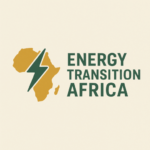Critical minerals have become the backbone of the global energy transition. Lithium, cobalt, graphite, nickel, and rare earths are essential inputs for batteries, electric vehicles, wind turbines, and solar panels. As the world accelerates its shift away from fossil fuels, demand for these minerals is projected to quadruple by 2040, according to the International Energy Agency (IEA).
Africa holds a decisive share of this resource base. The continent is home to over 70% of global cobalt, 45% of manganese, over 40% of platinum, and substantial lithium and graphite reserves. Yet the critical question is not about geology but about governance: who controls the chain from mine to market?
At present, Africa largely extracts and exports raw minerals, while value addition, refining, processing, and manufacturing take place elsewhere, mainly in China, the European Union, and the United States. Unless the structure changes, the continent risks repeating the extractivist trap of the colonial and oil eras: exporting raw wealth and importing finished technology at a premium.
Extraction: Africa at the base of the chain
The Democratic Republic of Congo (DRC) dominates global cobalt supply, producing over 70% of the world’s output. Southern Africa remains pivotal for platinum group metals. Zimbabwe, Namibia, and Mali are emerging as significant lithium producers, while Mozambique and Tanzania have graphite prospects.
This abundance has positioned Africa as a critical supplier in global markets. However, most mining contracts remain geared towards raw material extraction, with stabilisation clauses and fiscal terms that limit governments’ ability to capture more value when prices rise. Recent research shows that 80% of cobalt exported from the DRC leaves the country unprocessed.
In the first stage of the chain, therefore, Africa is central yet subordinated: it digs, ships, and repeats.
Refining: Asia dominates, Africa lags
The next link in the circuit, refining, is where Africa is most absent. Over 70% of the world’s cobalt refining capacity is located in China. Lithium refining is similarly concentrated, with China processing around 60% of the global supply. Even where African countries export substantial ore, such as Zambia with copper or Zimbabwe with lithium, the refining step is outsourced.
This imbalance creates asymmetries of power. By controlling refining, China not only captures more value but also dictates terms downstream, in manufacturing batteries and electric vehicles. The EU and US, meanwhile, are investing heavily in building domestic refining and recycling plants to reduce dependence on Beijing.
Africa’s role in this segment is marginal. Attempts to build local refineries often confront financial, technical, and regulatory barriers. Where projects have been announced, such as a planned lithium processing facility in Zimbabwe, they are frequently undercapitalised or dependent on foreign investors who prioritise export over local integration.
Manufacturing: technology capture outside Africa
Manufacturing is where critical minerals become the technologies of the future: EV batteries, solar panels, or wind turbines. Here, Africa is almost absent. China leads with more than 75% of global EV battery production capacity. The US and EU are catching up, deploying industrial policies like the US Inflation Reduction Act and the EU Critical Raw Materials Act to onshore battery and EV supply chains.
Africa, despite supplying the raw inputs, is largely locked out of this stage. The continent imports the very technologies built on its minerals, often at high cost. This is the essence of the extractivist trap: resource abundance without industrial capture.
Governance and power asymmetries
The circuits of critical minerals reveal a global hierarchy: Africa at the base (extraction), China at the centre (refining), and advanced economies at the apex (manufacturing and innovation).
This pattern is not accidental. It reflects structural imbalances in finance, technology, and governance:
- Finance: Africa faces high borrowing costs and limited concessional capital for infrastructure and industrial projects.
- Technology: Processing and refining technologies are closely held by a few global players.
- Contracts: Many mining agreements include stabilisation clauses that lock in terms unfavourable to host countries.
- Trade regimes: The EU’s Carbon Border Adjustment Mechanism (CBAM) and US mineral sourcing rules risk penalising African exports if local value addition is not recognised.
Unless these asymmetries are confronted, Africa’s minerals may once again fuel global prosperity without transforming local economies.
Opportunities for disruption
Despite the risks, opportunities exist to reshape Africa’s role in critical mineral circuits:
- Regional hubs for refining and processing. Southern Africa could pool resources to establish cobalt and lithium refining facilities, while East Africa develops graphite processing hubs. This requires cross-border planning, infrastructure investment, and regional power pools to ensure affordable electricity.
- Resource nationalism with nuance. Moves by countries like Zimbabwe to ban unprocessed lithium exports are controversial but signal an attempt to secure more local value. For such measures to succeed, they must be paired with industrial policy, not just export restrictions.
- Strategic partnerships beyond raw exports. Africa can leverage its minerals in negotiations with the EU, US, and China, not just as suppliers but as partners in co-investing in downstream industries.
- Leveraging the African Continental Free Trade Area (AfCFTA). Regional trade integration can create larger markets for processed minerals and technology goods, making investment in local industries more viable.
Risks of repeating history
The parallels with Africa’s past are stark. During colonial rule, raw materials, from gold to cotton, flowed out of the continent to power European industrialisation. In the oil era, crude exports enriched multinationals while many African economies became debt-dependent and vulnerable to price swings.
Critical minerals could become the “new oil,” locking Africa into another cycle of extraction without transformation. The danger lies not only in economic loss but also in geopolitical marginalisation. If Africa remains a passive supplier, it will have little influence over the rules of the global energy transition.
The road ahead
Africa faces a choice: remain a supplier of raw materials or become a strategic actor shaping the full value chain. This requires courage in renegotiating contracts, investment in infrastructure, and collective bargaining through continental bodies like the African Union.
It also demands that external partners, whether China, the EU, or the US, recognise Africa not merely as a quarry but as a partner in co-creating the industries of the future. Without such recognition, calls for a “just transition” will ring hollow.
Conclusion
The circuits of critical minerals tell a familiar story of global inequality: Africa extracts, others refine, and advanced economies manufacture. Yet history does not have to repeat itself. With strategic governance, regional collaboration, and assertive negotiating, Africa can move up the chain from mine to market.
The stakes are high. Critical minerals are not just about batteries and wind turbines; they are about who captures the wealth of the 21st-century energy system. For Africa, the choice is clear: either remain at the margins of value addition, or seize the opportunity to rewrite the terms of global trade.


